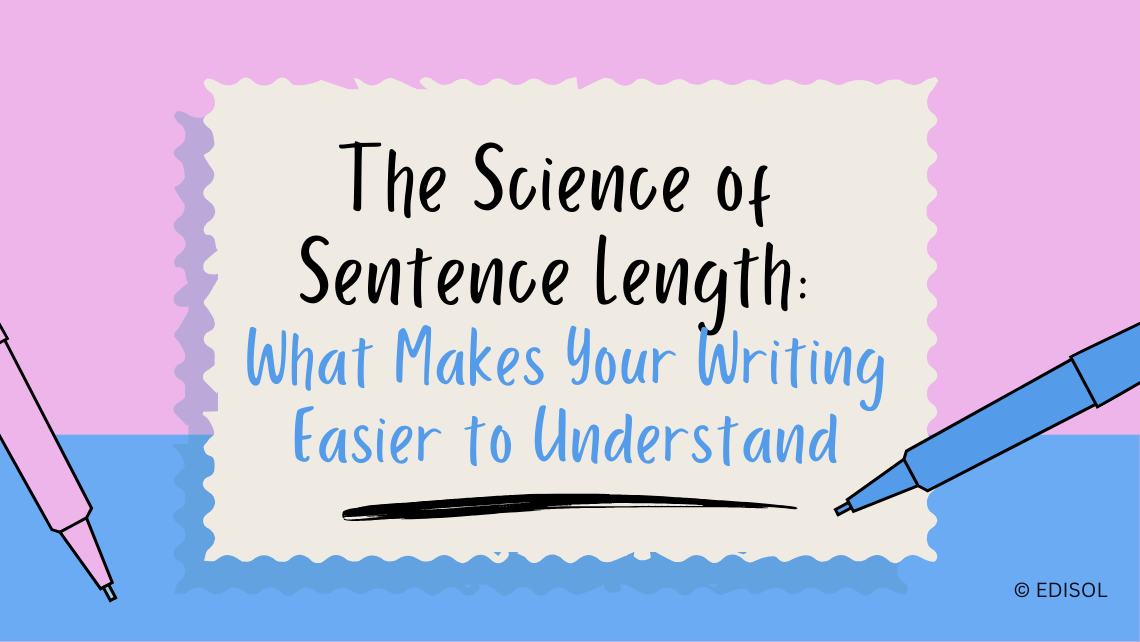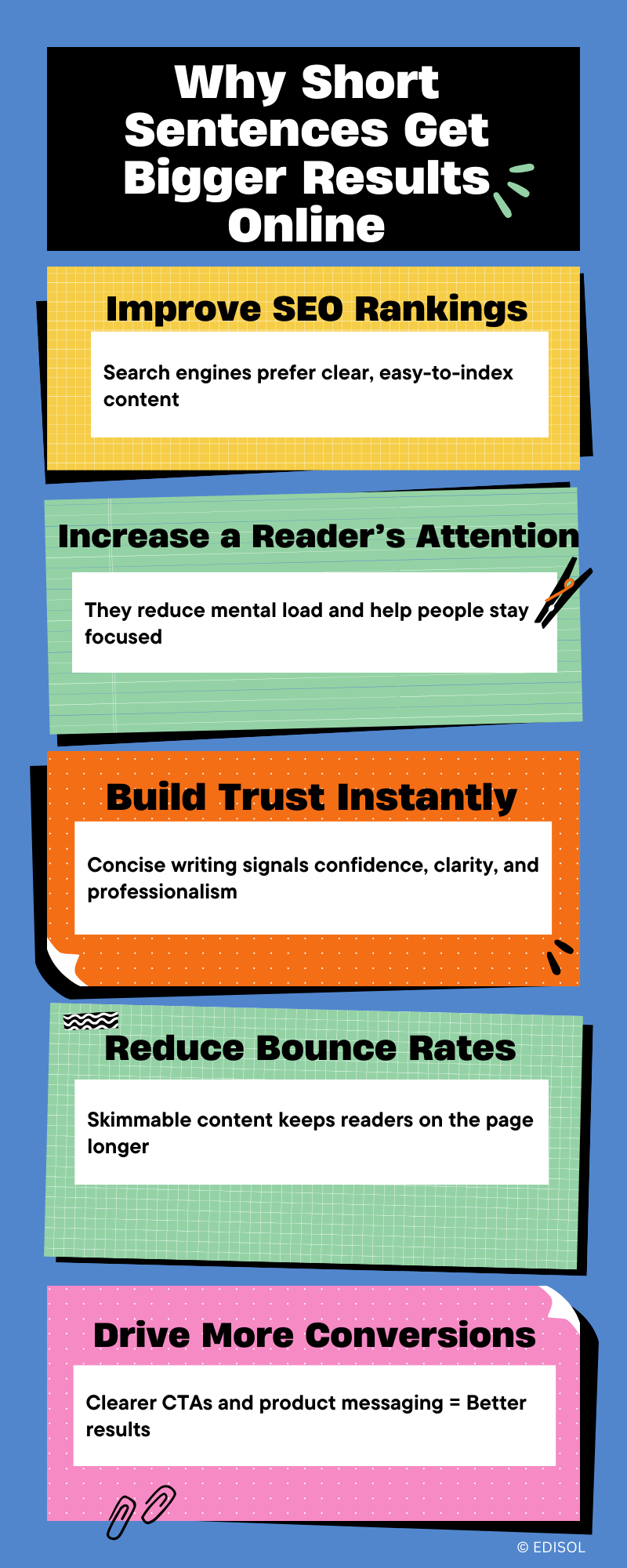The ideal sentence length can make content more effective. It boosts clarity, improves reader engagement, and builds trust. When readers understand your message quickly, they’re more likely to stay, connect, and act.
Many content writers (and brands that publish content consistently) fall into the trap of writing long, cluttered sentences in blogs and case studies. This often occurs due to an excessive number of ideas or descriptors. As a result, these sentences confuse more than they inform. The goal is to communicate, not overwhelm, and getting the sentence length in writing on point is key.
Why Do Long Sentences Disrupt Readability?
Some believe long sentences showcase better writing. While it may look good in literature, your readers are not reading your content like a novel. They want quick, clear information. Long sentences reduce clarity and can confuse the reader, especially when the topic is complex.
Most readers multitask while reading. They may be commuting, working, or doing chores. Long sentences demand more effort and focus, and thus are less effective. The table below demonstrates the scenarios:
- Mental Load: Reading while multitasking creates a high cognitive demand, making it very likely for readers to miss or misinterpret key information.
- Risk of Confusion: Encountering unfamiliar topics or terms increases the mental effort required, making confusion likely.
- Comprehension Difficulty: Long and complex sentences add maximum strain, making misunderstanding or loss of focus almost certain.
In sectors like finance or healthcare, clear writing is crucial. Misunderstandings can lead to serious problems. Even if readers don’t consciously realise it, long sentences can suggest:
- You haven’t taken the time to write clearly
- You don’t care about their time or attention
- You don’t understand the topic well yourself
This perception can lead to poor outcomes, such as:
- Lower website traffic
- Poor search rankings
- Fewer conversions and less engagement
Why Short Sentences Enhance Readability
Short sentences typically express a single idea, so they are easier to process and understand. Writers reduce the likelihood of grammatical or structural errors when they keep sentences brief.
It also has other benefits such as:
1. Alignment with Digital Reading Habits
We live in an era where rapid consumption of digital content is common. This is where the psychological principles of cognitive fluency that affect content marketing come into play. Readers prefer text they can skim without losing meaning.
2. A Reflection of Clarity and Precision
Short sentences also reflect careful thinking. They suggest that the writer:
- Did not use unnecessary words
- Chose words with purpose
- Focused on delivering only what is essential
Achieving this level of clarity, however, requires time and practice. As a writer, you should:
- Edit rigorously
- Structure ideas deliberately
- Prioritise clarity over flourish
3. A Marker of Professionalism
A commitment to clarity demonstrates professionalism. It signals that the writer values the reader’s time and attention. When the goal is to leverage content marketing for a stronger brand presence, these qualities are essential.
They send a strong signal to both readers and search engines. They suggest that the writer is credible, knowledgeable, and worthy of engagement.
Ideal Sentence Length and Structured Content
According to a study by Kadayat and Eika (2020), readers feel comfortable when sentences contain between 16 and 20 words. This range is not only optimal for comprehension but also improves accessibility – particularly for individuals who rely on screen readers.
The American Press Institute established a direct link between sentence length and reader understanding. Their findings reveal the following:
- Readers fully understand sentences with 8 words or fewer
- They grasp about 90% of the meaning in 14-word sentences
- Their understanding drops below 10% when sentences have 43 words or more
These figures underscore the importance of sentence economy in digital communication.
Tips for Writing Shorter Sentences
It is natural to write longer sentences when we become deeply engaged in the flow of writing. At times, breaking them down may seem counterproductive, as if it weakens the message or disrupts the tone.
However, with the right strategies, you can refine your content for clarity without compromising its intent or rhythm.
Here are some tips you can use:
- Start With the Verb: Long sentences usually make everything more complicated, and they also contain several unnecessary verbs. Try to start with one verb at the beginning, which will be enough to convey the tone.
- Watch for Too Many Commas: If your sentence has two or more commas (and it’s not a list), it may be too long. Try breaking it into two. It’ll likely be clearer.
- Cut Unnecessary Adjectives: Long sentences often contain extra descriptive words. Remove it or split it if it feels unnecessary.
- Use More Full Stops: Commas create flow, but full stops give readers a break. Use them to separate thoughts clearly.
- Write in Active Voice: Active voice is direct and easier to read. For example, ‘We completed the project’ is easier than ‘The project was completed by us’.
Strong sentence construction is essential for good writing, along with precise word choice and correct grammar. The future of writing lies in simplicity. Readers should be able to absorb your content effortlessly and get clear and actionable information.
Want a do-over of your writing strategy? Edisol can help you achieve your goals with writing that promotes clarity and boosts engagement. Connect with us to see how we can support your enterprise.





